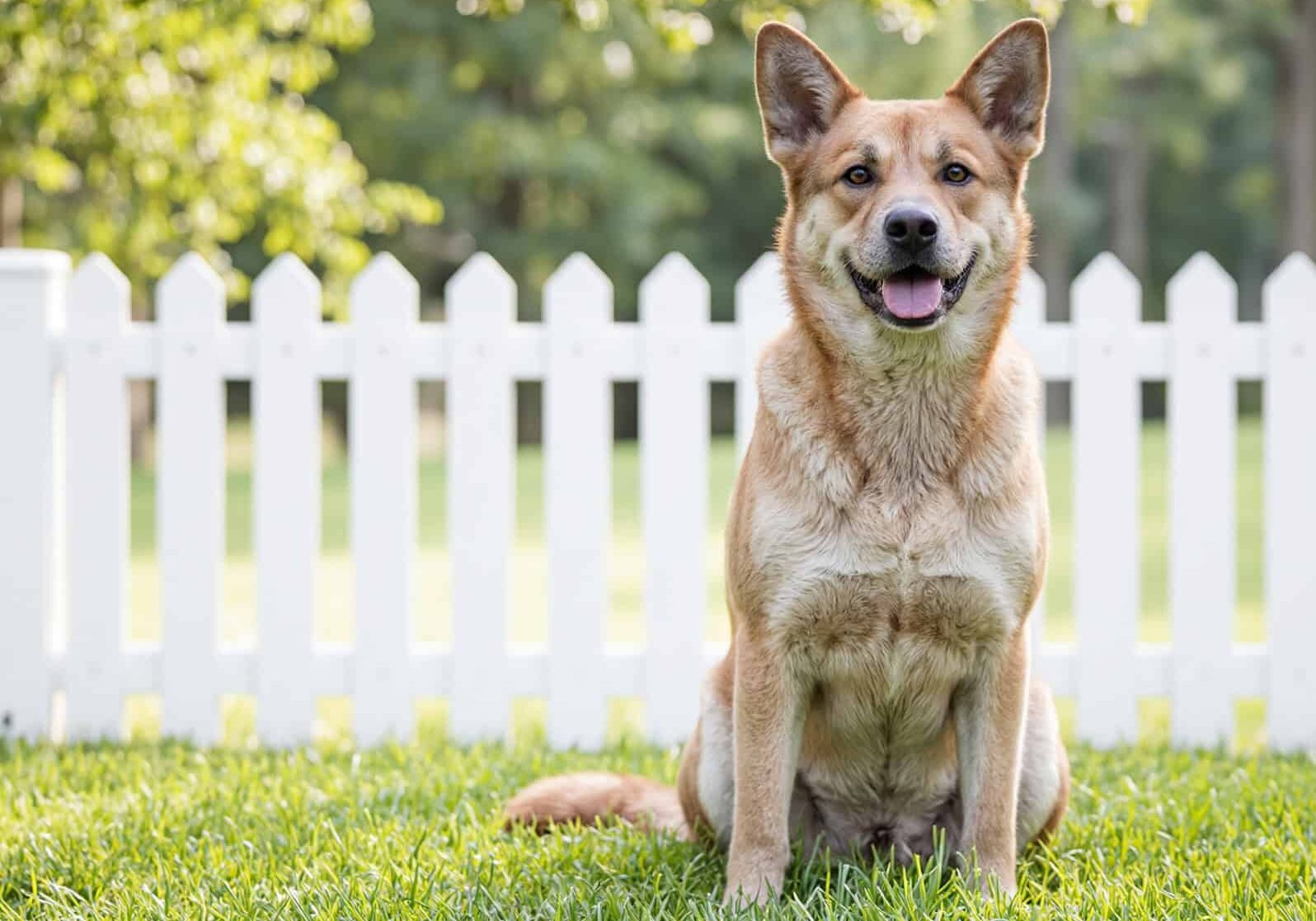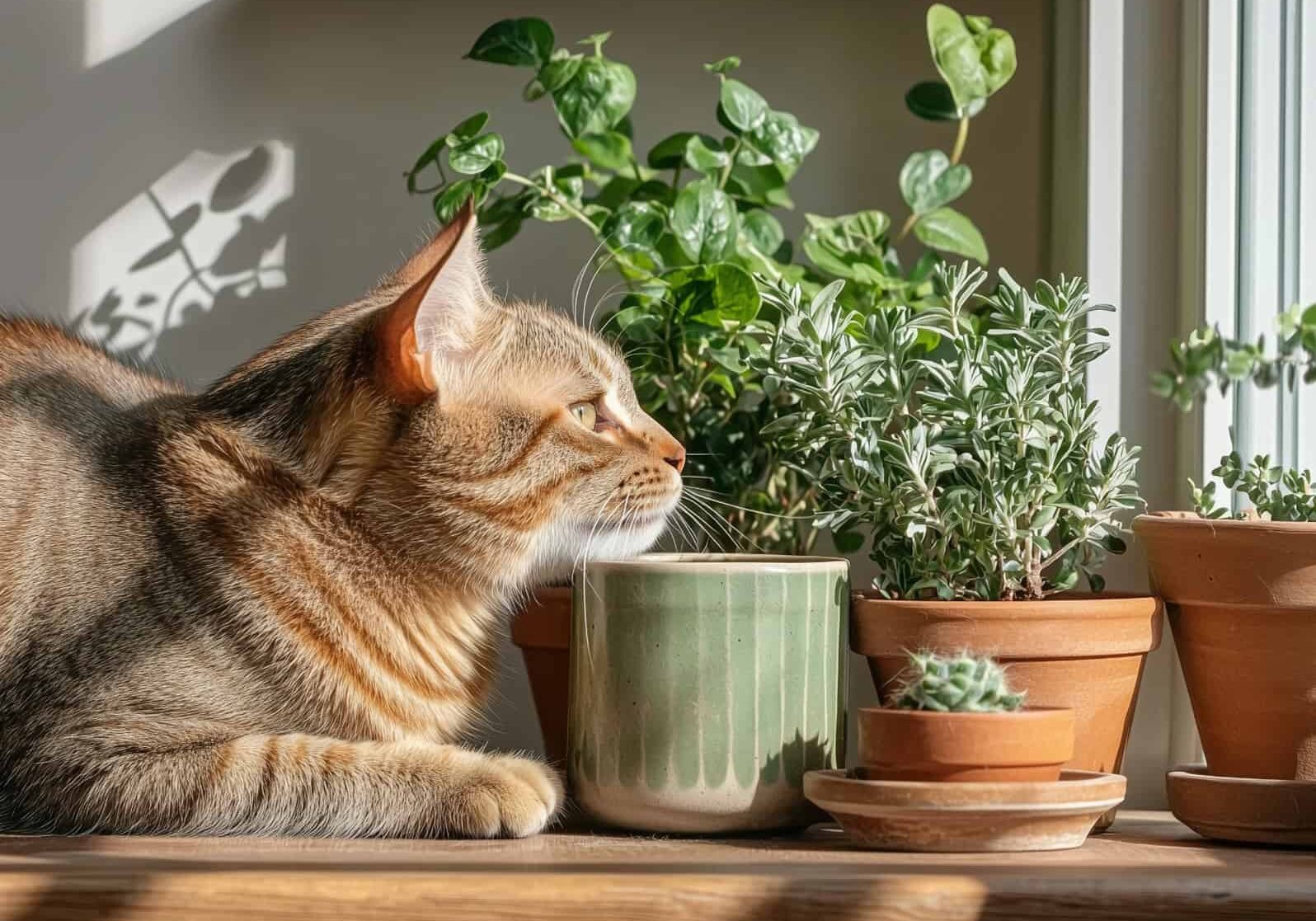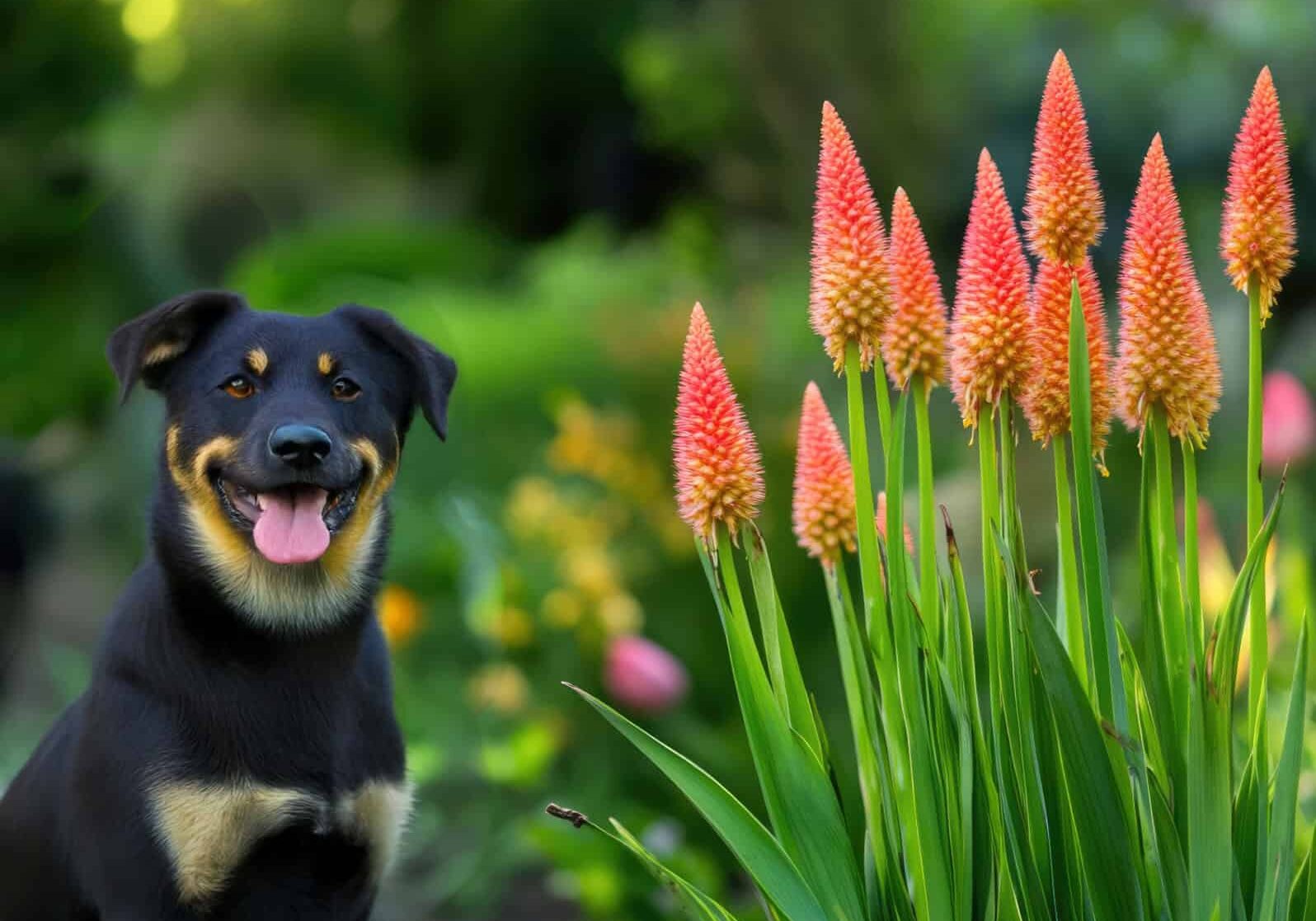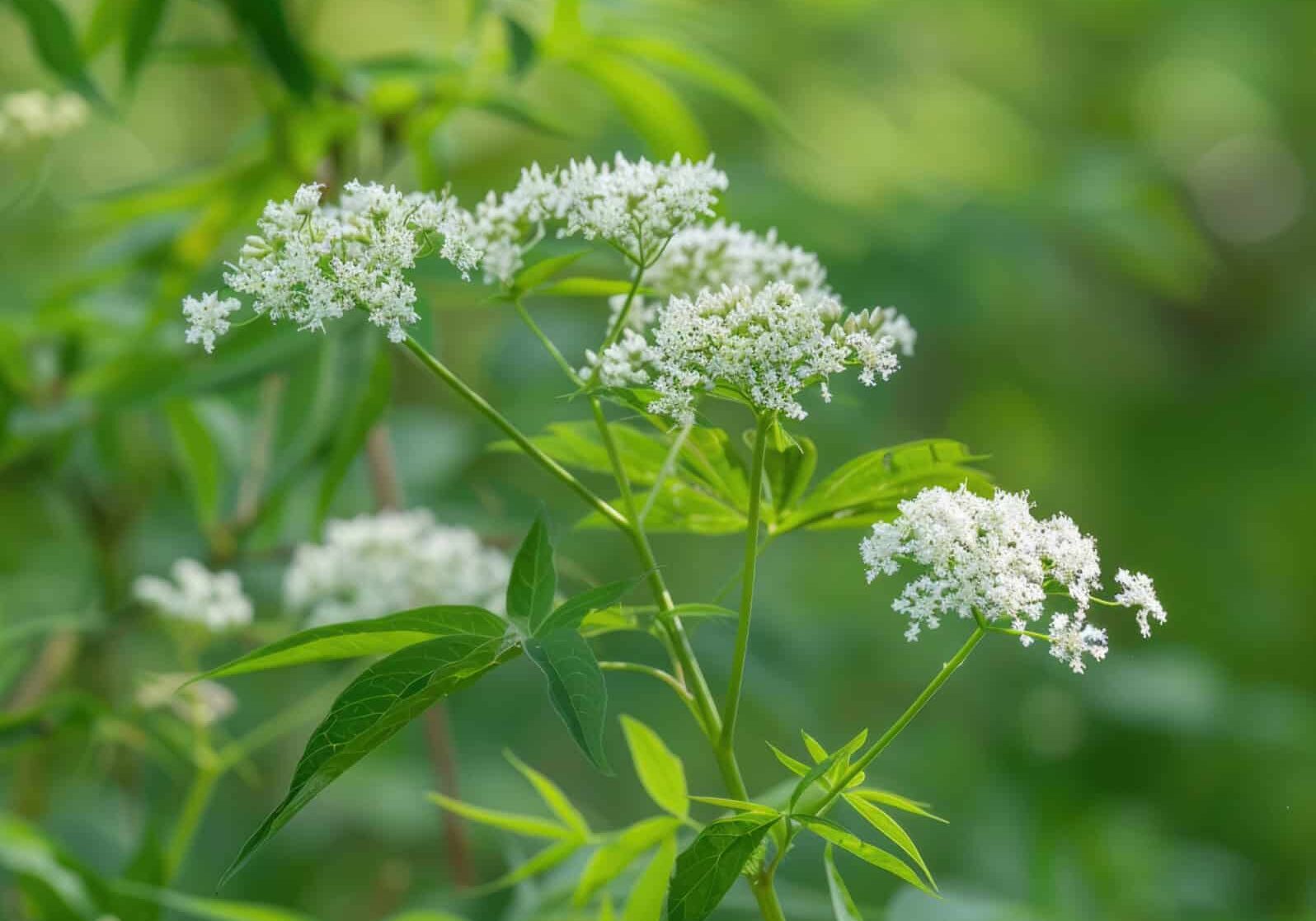

Pets and Home Gardens
Protecting your pets from the plants and your plants from your pets!
By Deborah Leitner, Skagit County WSU Extension Master Gardener

Deborah Leitner
Several years ago, when we adopted our beloved black lab Shadow from the Seattle Humane Society, I had visions of my new best friend spending hours with me in the garden, frolicking by my side, as I weeded, puttered, planted, pondered, and pruned my way through my fenced-in urban backyard oasis. Shortly after we got him home, it became clear that Shadow had a different plan.
Shadow’s propensity for joyful exuberance posed specific gardening challenges, as he loved to dig, eat strawberries and vegetables, and generally disturb any carefully laid out plans. Some plants were lost, but I found a new focus in creating an environment where he could frolic and play, and we could enjoy him while not stressing too much if any plant or shrub got injured in the process. Both pets and gardening require planning, patience, and a healthy dose of reality.
What to Avoid
The ASPCA (American Society for the Prevention of Cruelty to Animals) offers a comprehensive list of toxic plants for dogs, cats, and horses on their website. (See reference below.) This website also provides a complete list of safe and non-toxic plants for pets.
Examples of toxic plants that are common in Pacific Northwest backyards include:
Daffodils: The flowers, leaves, and bulbs can cause abdominal pain, vomiting, and diarrhea. In severe cases, cardiac arrhythmias and respiratory problems may occur.
Lily of the Valley: Dogs who eat lily of the valley may experience cardiac arrhythmias, decreased heart rates, and seizures.
Tulips and hyacinths: The bulbs are toxic. Mild cases show drooling and some vomiting. If dogs eat too many, they may show an increase in heart rate.
Azaleas: These can be fatal if your dog even chews on leaves.
The above list is not meant to be all-inclusive but rather a sampling of the most commonly encountered toxic plants in urban backyards. For more detailed lists, check out the WSU and ASPCA references below.
Also, many houseplants are toxic to both cats and dogs. Be sure to keep your indoor plants well out of reach of pets. A few of the most toxic plants include aloe, philodendron, pothos, jade plant, and asparagus fern. If you need help identifying your houseplants, the master gardeners at the WSU Extension Plant Clinics in Burlington or Anacortes or the Farmer’s Market booths in Mount Vernon or Sedro Wooley are excellent resources for identification of plants.
According to the ASPCA, it is a myth that dogs and cats instinctively avoid toxic plants. If you see your dog or cat eating a plant and are unsure if it is harmful, it is best to contact your vet as soon as possible. The ASPCA Animal Poison Control Center is also available 24 hours a day, 365 days a year, at (888) 426-4435 to answer any questions in an emergency.


What to Plant
There are many plants that both do well in the Pacific Northwest and are safe for dogs. The following list highlights some of the safe plants that are commonly found in PNW backyards:
Shrubs: Abelia is a hardy shrub that can tolerate many challenges, including being sprayed with dog urine. Green Mountain boxwoods, cypresses, and Rocky Mountain Juniper are good hedge options. Mature shrubs are more resistant to dog damage.
Trees: Camellias, magnolias, and Japanese maples are all good choices
Perennials: False goat’s beard (Astilbe,) ornamental grasses, red hot pokers (Kniphophia,) goat’s beard, echinacea, and rudbeckia all seem to tolerate the paw traffic.
Annuals: Sunflowers, fuchsia, pansy, and petunia are all safe for dogs.
Herbs: Organically grown edible herbs are a good option.
Native plants: Salal, evergreen huckleberry, Oregon grape, and western sword ferns are all hardy natives that are safe for dogs.
Other plants: Japanese aralia, hardy geranium, coreopsis, and nasturtiums are all dog-friendly plants
If you have a fence, try leaving a few feet between the fence and your plants. Dogs love running the fence line, chasing squirrels, saying hi to neighbors, and protecting their humans. You are saving your plants from being trampled by giving them space to do so.

Perennials such as red hot pokers (Kniphophia), goat’s beard, echinacea, and rudbeckia all seem to tolerate paw traffic. Photo © Adobe Stock

If your pets have room to roam outside, it is critically important to identify the plants growing where they roam. Poison-hemlock is highly toxic to humans and animals and should be removed following Washington State Noxious Weed Control guidelines. Learn more here: Poison Hemlock Prevention Photo © Adobe Stock
Fertilizing and Mulching
Commercially prepared, organic compost on garden beds is a safe choice for dog owners. A risk is involved if using homemade compost, as mold and fungi may be present in the decomposing material containing neurotoxins. Arborist wood chips are an excellent option for mulching, but some dogs (like mine) love to eat the chips, posing other risks.
Two mulches to avoid are cocoa mulch and pine needle mulch. Cocoa mulch contains theobromine, a toxin that is dangerous to dogs. Pine needle mulch can damage your pet's stomach lining.
If you fertilize your lawn, be sure to read the label carefully. Many products say they are safe for use around pets, but they still recommend that you keep pets off the recently fertilized grass for up to 48 hours. Consider using a mulching lawn mower, leaving the cut grass in a place where it will break down and add nitrogen back to the lawn. Another option is to let your lawn go dormant in the summer, knowing it will return to life in the fall.
Got Slugs?
If you garden in the PNW, you are likely familiar with slugs. Our most famous native slug, the banana slug, is mainly seen in the forest, eating away at decaying matter. Slugs, specifically native slugs, have their place in the greater scheme of things; they are vital to the decomposition of organic matter and provide food for birds, snakes, frogs, and other animals. However, most slugs the home gardener encounters are not native, having been introduced from Europe. Once introduced, they made themselves right at home and drive the home gardener crazy.
Commercial slug products containing metaldehyde are highly toxic to pets, birds, wildlife, and humans, and should be used with a tamper-proof bait station, if used at all. Poisoning occurs even if a small amount is ingested. Products containing iron phosphate are considered safer for people and pets, but should be used cautiously, as poisoning can still occur if your pet ingests large amounts. If you choose to use the products containing iron phosphate, read the instructions carefully, and consider putting a barricade such as a small fence or wire basket around the plant in question to prevent your dog or cat from getting near the product.
Some gardeners use broken shells, lava rock, or other rough materials to deter slugs from the area without using chemicals. Placing copper bands around plants or planting lavender, mint, or rosemary may discourage slugs and snails from entering the garden.
A safer alternative is to trap the slugs using bait. Bury a container such as a margarine tub containing yeast mixed in water (beer works well for this method), so the slug will fall into the trap and drown. You will need to monitor the trap and replace the bait regularly. Baited traps don’t discriminate by species, however. Other small wildlife can meet their end by falling into the trap. It’s a good idea to remove the trap during the day so that Fido isn’t tempted to indulge, and then set the trap out again in the evening.
Many gardeners prefer controlling slugs manually. It is time-consuming, but tried and true. Fill a jar with soapy or salty water, pick the slugs from the plants, deposit them in the jar, seal them, and wait a few days. Then flush the contents down the toilet. Over time, your slug population will substantially diminish, and your pets and other wildlife will be safe from chemical (and alcohol) poisoning. Learn more about managing slugs at: skagitmg.org/managing_slugs_snails/
Overall, the toxicity of slug bait is a significant concern for pet owners. Prompt intervention is crucial if poisoning is suspected, and preventive measures can help ensure the safety of your pet.

Shadow living the good life. Photo © Deborah Leitner
Shadow never lost his youthful exuberance and propensity for mischief in the garden. He lived a joyful life, but sadly, at age 13, it was time to say goodbye. It took a while to be ready for a new canine companion, but Shadow’s successor, Teddy, was found at the Skagit Valley Humane Society. Or you might say Teddy found us because we certainly didn’t expect to come home with a 10-year-old black lab mix. But discovering the joy of living with a mature senior dog, Teddy is a good match. Teddy is not interested in gardening but loves being a backyard companion.

Know & Grow
The Science Behind Companion Planting
Tuesday, May 20, 2025
1 pm - 2:30 pm
NWREC Sakuma Auditorium
16650 State Highway 536, Mount Vernon
Based on research by horticultural scientists such as Dr. Linda Chalker-Scott and Dr Jeff Gillman, you will learn natural ways to prevent or lessen pest and disease problems in your garden. Use plant combinations, polyculture, and other science-based practices for a healthier garden. Master Gardener Rae Barto will share these findings and advice.

Mark Your Calendar:
Annual Three Garden Open House
Saturday, June 28, 2025
10 am - 2 pm
Discovery Garden
16602 State Route 536 (Memorial Highway)
Mount Vernon, WA 98273
Fun Activities for Kids ~ Plant Sale
Water Conservation Experts ~ Noxious Weed Information
30+ Garden Rooms ~ Plant Clinic and Gardening Help
Native Plants ~ Pollinators
Talk to Fruit Tree Experts
 Interested in becoming a Master Gardener?
Interested in becoming a Master Gardener?
WSU is introducing a new program called Washington Green School which will include WSU Extension Master Gardener training. Beginning this fall, Green School will offer two distinct tracks in its online course: one for individuals looking to enhance their gardening skills through research-based horticultural and environmental stewardship, the Washington Gardener course, and another for those who wish to take it further by becoming a WSU Extension Master Gardener Program volunteer.
Learn more about the training at: https://greenschool.extension.wsu.edu/
Applications to become a Skagit County WSU Extension Master Gardener are due by August 15, 2025 to be in the Class of 2026.
Apply at: https://extension.wsu.edu/skagit/mg/apply/
REFERENCES AND RESOURCES:
Chaulker-Scott, L. (2007) Wood chip mulch: Landscape boon or bane? Retrieved at: https://s3.wp.wsu.edu/uploads/sites/403/2015/03/wood-chips.pdf
Animal Poison Control. American Society for the Prevention of Cruelty to Animals. Retrieved at: https://www.aspca.org/pet-care/animal-poison-control
Toxic and Non-Toxic Plant List – Dogs. American Society for the Prevention of Cruelty to Animals. Retrieved at:https://www.aspca.org/pet-care/animal-poison-control/dogs-plant-list
Toxic and Non-Toxic Plant List – Cats. American Society for the Prevention of Cruelty to Animals. Retrieved at: https://www.aspca.org/pet-care/animal-poison-control/cats-plant-list
Plants toxic to dogs. Cornell University College of Veterinary Medicine. Retrieved at: https://www.vet.cornell.edu/departments-centers-and-institutes/riney-canine-health-center/canine-health-information/plants-toxic-dogs
Plant toxicity and Pets. Texas A & M University Extension. Retrieved at: https://travis-tx.tamu.edu/about-2/horticulture/ornamental-plants/plant-toxicity-and-pets/
Poisonous Plants & Your Pets. (2024) Spokane County WSU Extension. Retrieved at: https://s3.wp.wsu.edu/uploads/sites/2076/2024/07/C094-Poisonous-Plants-and-Your-Pets.pdf
 ABOUT THE AUTHOR:
ABOUT THE AUTHOR:
Deborah Leitner is a Skagit County WSU Extension Master Gardener class of 2007. Along with caring for the Discovery Garden, she can often be found helping answer questions at the Plant Clinic in Burlington.
Questions about home gardening or becoming a master gardener may be directed to Skagit County WSU Extension Office, 11768 Westar Lane, Suite A, Burlington, WA 98233; by phone: 360-428-4270; or via the website: www.skagit.wsu.edu/mg
Washington State University Extension helps people develop leadership skills and use research-based knowledge to improve economic status and quality of life. Cooperating agencies: Washington State University, US Department of Agriculture, and Skagit County. Extension programs and policies are available to all without discrimination. To request disability accommodations contact us at least ten days in advance.
Well written! Thanks for sharing this information!
I was unaware that iron phosphate could be poisonous to dogs, but now understand it is only in large quantities. Thanks for the reminder to be judicious with its use. I personally have a problem with using salt or soapy water to kill slugs as I imagine them suffering for some time before dying. Using beer to drown them seems kinder I guess. Right now, I’ve been putting the mollusks in with my green barrel waste and sending them on a trip to the giant compost pile in the sky.
Thanks for the great information!